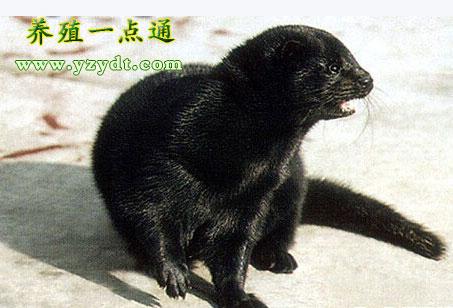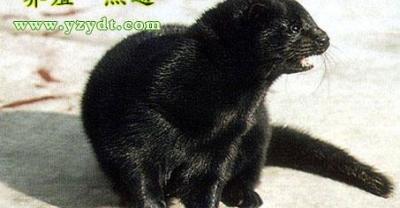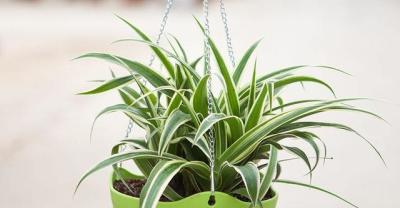Mink breeding: feeding and management of mink in winter hair period
The winter hair growth period of minks is from September to December. Young mink to September, the bone growth period has passed, mainly muscle growth and fat deposition, summer hair, long winter hair, reproductive organs have gradually begun to develop. Mink groups should be selected before October so that they can be raised and managed in groups.
Feeding: the content of protein in diet can be reduced appropriately. The proportion of general animal feed for leather mink is 5% less than that of breed mink by 10%. Can not use meat, liver, eggs, milk and other high-cost feed, can be used with small miscellaneous fish, a variety of livestock and poultry scraps, rabbit by-products and other products. However, the supply of protein feed containing sulfur amino acids should be limited to facilitate the growth of plush, such as blood, feather powder and so on. The grain feed in the diet should be appropriately increased, but it should not exceed 30% of the diet. In this way, the fatness of mink can be improved, the animal feed can be saved, the cost can be reduced and the length of skin can be increased. Mineral feed should be reduced appropriately. Prohibit the use of a large number of rabbit skulls, rabbit skeletons, chicken skeletons and other mineral-rich feed, otherwise it is easy to cause needle hair curling and reduce the quality of fur. Rabbit skulls, rabbit skeletons and chicken skeletons should not exceed 30% of animal feed. Appropriately increase the amount of dietary fat, in the feed mainly marine miscellaneous fish, we should increase the amount of fat, so that it accounts for about 10% of the dietary dry matter. If the fat content in the feed is still not enough, vegetable oil 0.5-1g/ per day can be added. High-temperature pox pork soup can also be used to mix feed to make the skeleton fat and fluffy glossy.

Management: the central task of management is to improve the length of leather and the quality of plush.
Group management: usually put the breed mink on the sunny side, so that it has enough light, which is conducive to the development of sexual organs. The leather is kept on the shady side of the mink shed to avoid browning the fluff from direct sunlight. Adding bedding grass to do a good job in the sanitary small room of the cage is damp and unclean, there is too much manure on the cage net, and the competition for food during feeding is easy to cause plush pollution and entanglement, so it is necessary to keep the small room dry and free of pollutants, and there is no fecal accumulation on the cage net. When feeding, be careful not to let the food contaminate the plush and increase the bedding grass at the same time. Bedding grass not only has the function of heat preservation, but also has the function of combing plush. Bedding grass should be added and replaced frequently from October to keep the chamber dry and clean. Keep clean and adequate drinking water shortage will affect mink metabolism and villi growth, and often change, keep clean. Strictly control feed to prevent disease from entering the mouth and forbid feeding rancidity and deterioration of feed. Except for marine miscellaneous fish, other freshwater fish and viscera of livestock and poultry should be steamed and fed. Establish and improve the health and epidemic prevention system, regularly disinfect food bowls, venues and cages, and regularly add preventive drugs to feed.
For more aquaculture techniques and business guides, please see the farming one-by-one mobile phone version of http://m.yzydt.com, or follow the WeChat official account: yangzhiuu.
- Prev

Raising rabbits is different from other breeding, feeding should be in order.
In the process of raising rabbits, many people are used to mixing all kinds of feed and think that this auspicious feed is convenient, as long as it is timed, quantified and fixed.
- Next

Technology of Bee Culture | the technology of changing king twice a year
The overwintering bee culture in southern Anhui begins from the first and middle of January to the end of the middle and late October. The breeding period is as long as 10 months. The queen bee is easy to aging, especially after high temperature in summer.
Related
- On the eggshell is a badge full of pride. British Poultry Egg Market and Consumer observation
- British study: 72% of Britons are willing to buy native eggs raised by insects
- Guidelines for friendly egg production revised the increase of space in chicken sheds can not be forced to change feathers and lay eggs.
- Risk of delay in customs clearance Australia suspends lobster exports to China
- Pig semen-the Vector of virus Transmission (4)
- Pig semen-the Vector of virus Transmission (3)
- Five common causes of difficult control of classical swine fever in clinic and their countermeasures
- Foot-and-mouth disease is the most effective way to prevent it!
- PED is the number one killer of piglets and has to be guarded against in autumn and winter.
- What is "yellow fat pig"? Have you ever heard the pig collector talk about "yellow fat pig"?

